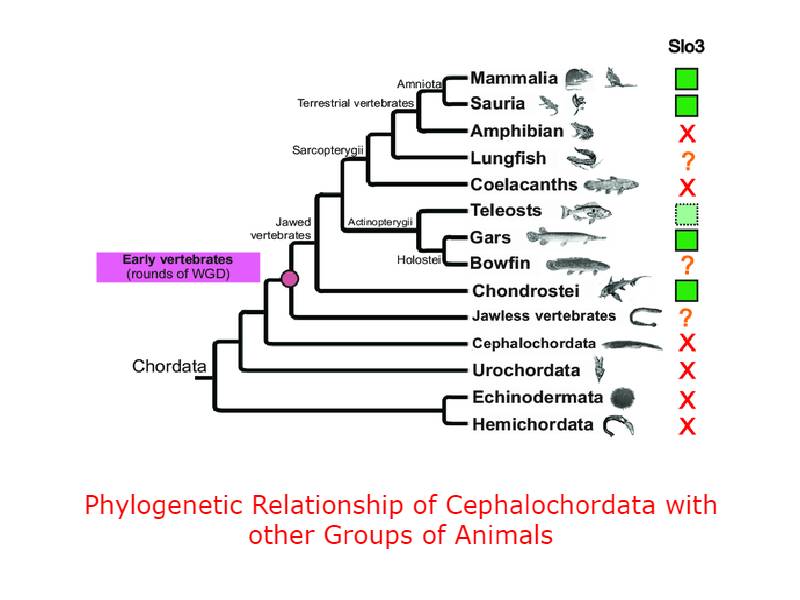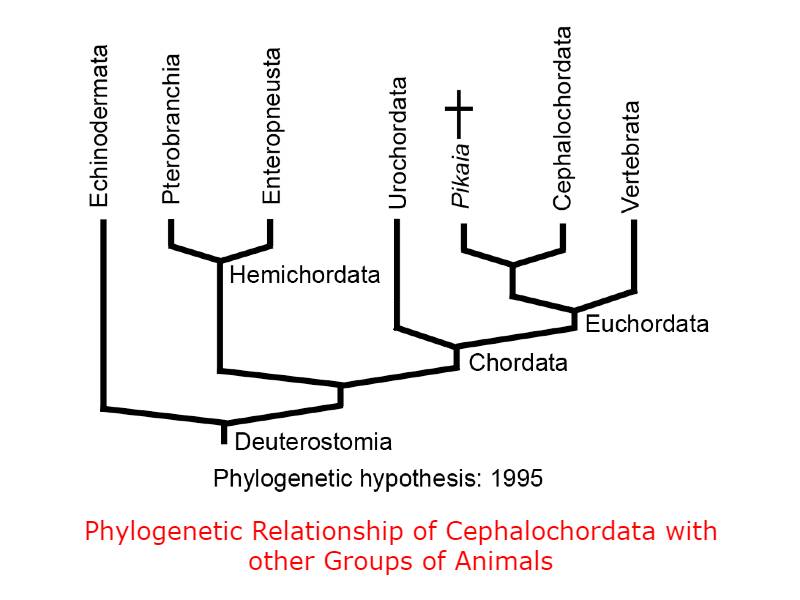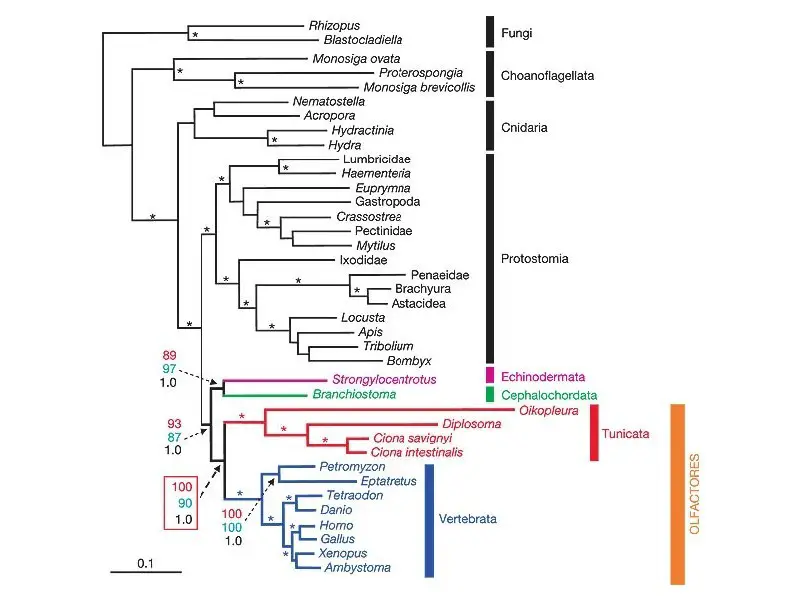In subphylum Cephaochordata we can see all the fundamental three characteristics of phylum Chordata and we list below those characters and how they present in the members of subphylum Cephaochordata and at last, we will discuss the Systematic Position of Cephaochordata.
Table of Contents
Dorsal Hollow Nervecord:
In Cephaochordata the nerve cord present on the dorsal side of the body has a hollow tubular lumen inside the nerve cord. The lumen of the nerve cord is filled with a fluid known as cerebrospinal fluid and the lumen of the nerve cord is known as neurocoel. On the anterior side, the nerve cord is enlarged and the enlarged part has a ventricle as observed in higher Chordata-like cerebral ventricle inside the brain. In Cephaochordata the enlarged part of the nerve cord can’t be assumed as brain but it has nerve emerged from it in pairs known as cerebral nerve.
The remaining part of the nerve cord is known as the spinal cord and the nerve that emerged from the spinal cord is known as the spinal nerve. The spinal nerve has dorsal and ventral roots, each spinal nerve is the mixed type with sensory and motor function. The nerve cord show clear differentiation of white matter and grey matter.

Notochord:
It is an important characteristic of the phylum Chordata, in Cephaochordata the notochord is present throughout the lifecycle. The notochord presents up to the rostrum beyond the brain which gives support to the whole body. But the notochord does not give anchorage to the visceral organs like in Chordata but the seathe present over the notochord which gives anchorage to the visceral organs.
The notochord is elastic in Cephaochordata which helps them to twist the body on the lateral side. The twisting movement is essential for swimming and the myotomes present on their lateral side help in swimming.
Pharyngeal Gill Slits:
The pharyngeal wall is perforated throughout life, the perforation on the pharyngeal wall is known as gill slits. The lateral wall of the pharynx has gill slits in pairs and the number is more than 50 pairs, the number of gill slits is more than usual because the number of gill slits is less in phylum Chordata. But the gill slits do not open directly outside, the gill slits open into the atrial cavity. The atrial cavity surrounds the large-sized pharynx so the pharyngeal gill slits can not open directly outside.
But the gill slits are not functional in respiration, the metapleural folds and fins take part in respiration.

So if we study all the characteristics in Subphylum Cephaochordata, the features are simple as compared to the features present in phylum Chordata. The brain is absent in Cephaochordata, a number of pharyngeal gill slits are in large numbers, the notochord is present beyond the brain, so we can say the Cephaochordata as simple Chordata or prototype of Chordata. So we can place them under phylum Chordata without any doubt but the similarities of Cephaochordata with other groups of animals confuse the workers about the systematic position of Cephaochordata.
According to Wiley Cephaochordata have all Chordata features are in simple form so they should be placed under the phylum Chordata. According to Garstang and Berrill, an Ascidian neotenic larva did not undergo metamorphosis and during the course of evolution, the larva give rise to the Cephaochordata and Vertebrata. But now it is not valid because the presence of special or some peculiar features in Cephaochordata forces the scientists to think of Cephaochordata as a separate line in the evolutionary history separate from the Chordata.
According to Costa, Yarrell, and Gregory the Cephaochordata originate from the jawless vertebrate, Cyclostomata or Agatha but there also controversy exists. In Cephaochordata the vertebral column, cranium, or brain box is completely absent so we can not think of them under Vertebrata.
Systematic Position of Cephaochordata:
The systematic position of Subphylum Cephaochordata is controversial due to the similarities with several groups of animals. But due to their presence of primitive, degenerative, and specialized features it is sure that they present on a separate line of evolution from Chordata.

They also have similarities with jawless vertebrate Cyclostomata but due to the absence of essential features present in vertebrates, we can not place them under Vertebrata. Finally, workers placed them in a separate individual Subphylum Cephaochordata under phylum Chordata as it has many similarities with Chordata.
Reference Cephalochordata Characteristics Features Classification Examples and Diagram
Detailed Information on
Characteristics Features of Subphylum Urochordata
Classification of Subphylum Urochordata
Examples of Subphylum Urochordata: Clavellina, Salpa, and Doliolum
Examples of Subphylum Urochordata
Branchiostoma Habitat and Geographical Distribution
External Morphology of Branchiostoma
Body Wall and Endoskeleton of Branchiostoma
Coelom and Movement in Branchiostoma
Digestive System of Branchiostoma
Digestion and Feeding Mechanism in Branchiostoma
Respiratory and Reproductive System of Branchiostoma
Excretory and Reproductive System of Branchiostoma
Branchiostoma: Morphology, Digestive, Reproductive, Nervous System
Characteristics of Subphylum Cephaochordata
Primitive Degenerate and Specialised Features of Subphylum Cephalochordata
Hi Everyone!!! Welcome to Imaluop. Imaluop always try to learn some new and he want to share to other people. Here we will try to learn various topics on Science, specially on Biological Sciences.